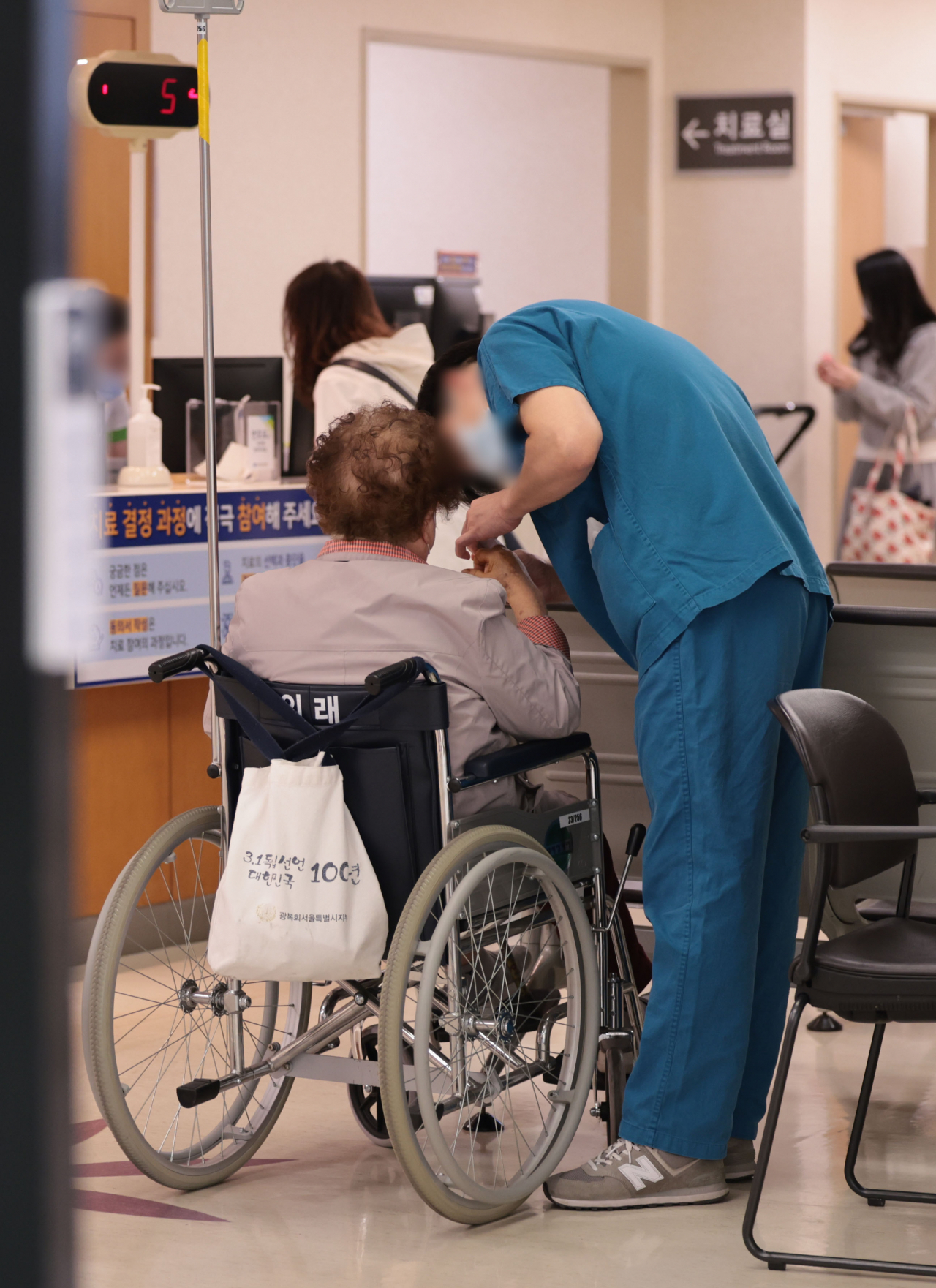S. Koreans shoulder slightly less than W1m a year for medical services
By Yoon Min-sikPublished : April 8, 2024 - 14:49

South Koreans paid an average of 960,000 won ($709) in 2021 for medical services, excluding state health insurance coverage, government reports showed Monday.
In a joint report, the National Health Insurance Service and the Korea Institute for Health and Social Affairs analyzed the data of 12,874 adults across the country, out of whom 11,844 used medical services in 2021.
South Korean law subsidizes the costs of medical services through the National Health Insurance program, to which all citizens and foreign nationals who lived in the country for at least six months are mandated to subscribe.
South Korean women spent 1.06 million won a year out of their own pockets in 2021, compared to 847,000 won for men. The personal expenditure tended to increase for older population, peaking at 1.43 million won for 70-somethings, followed by 1.36 million won for those in their 60s.
An average person uses medical services 17.8 times a year while older people used medical services more frequently. Those in their 70s used them 33.5 times a year, 80-somethings 31.4 times a year, and 60-somethings 25.1 times a year.
The average cost Koreans shouldered for a single medical service was 49,481 won. The costs varied according ot the type of service, which the study divided into three categories: emergency care, hospital admission and outpatient care.
A single emergency case cost an average of 85,859 won, medical care following admission cost 1.33 million won and outpatient care, the most common, cost an average of 36,431 per case.
Some 41.5 percent of those who participated in the survey said that the financial burden of medical services was difficult to bear, compared to 35.6 percent who said it wasn't. About 16.6 percent of women and 14.1 percent of men said they needed medical care in the given year, but decided not to get it.
The leading cause was "they did not have time for it" at 39.9 percent, followed by "financial issues" at 19.1 percent.
A recent OECD report indicates that health expenditure by South Koreans was slightly below that of other member states. According to the "Health at Glace 2023," the country spent $4,570 in total medical expenses -- combining both public and private health schemes -- which is a little less than the OECD average of $4,986.
In terms of medical expenses, the country in the overwhelming lead is the US, spending $12,555 a year compared to Switzerland's $8,049 and Germany's $8,011, No. 2 and No. 3 on the list.
The OECD report also showed that $1,705 a year comes out of each South Korean's pocket for health expenditure, differing substantially from the aforementioned report by the government. This disparity derives from the fact that OECD report also includes spending on voluntary arrangements such as private health insurance programs, while the government report includes only the direct payments by each household.



















![[Today’s K-pop] Treasure to publish magazine for debut anniversary](http://res.heraldm.com/phpwas/restmb_idxmake.php?idx=642&simg=/content/image/2024/07/26/20240726050551_0.jpg&u=)